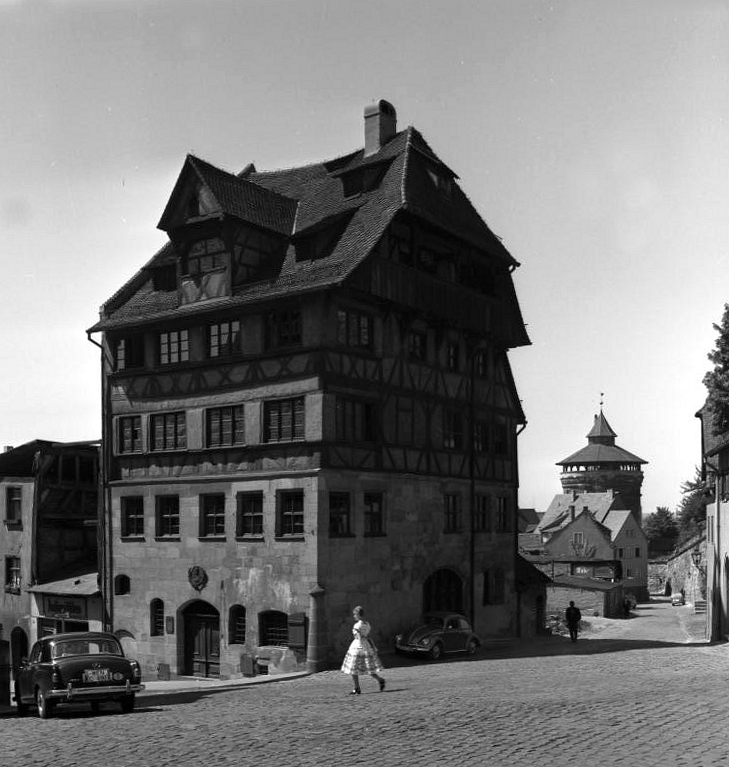A couple years back, while in Nürnberg, we were eating lunch at the Augustiner Restaurant. As we were enjoying our lunch, we struck a conversation with the waitress about places to explore. She mentioned the historic Albrecht Dürer half-timbered Fachwerk home that was just a couple feet away.

Albrecht Dürer was Germany’s most famous painter and lived from 1509 in the large half-timbered house for almost 20 years. The photo you see above is of the beginning of the 1900’s.
We learned that this Fachwerk is one of the few homes that was not completely destroyed in Nürnberg. The Albrecht Dürer Haus in Nuremberg from the 15th century is the only “Artist” house that has survived in Northern Europe.
The oldest beams in the house on the corner of the former Zisselgasse can be dated to 1418, which suggests the construction of the stately building around 1420. It has four floors, the lower two of which are made of sandstone and the upper two are half-timbered.

The half-hipped roof has a small attached room on the street side. It was reconstructed in the 19th century, because it was mistakenly presumed that Dürer’s workshop was at that location.
Albrecht Dürer (1471-1528)
Dürer was a German painter, graphic artist and mathematician. With his paintings, drawings, copper engravings and wood work, he is one of the most outstanding representatives of the Renaissance
Below: A self portrait in oil anno 1500

The rooms convey an authentic atmosphere today, and reflect the history of the Fachwerk as the first German artist museum since 1828. A special feature are the tours of an interpreter in the garb of Albrecht Dürer’s wife Agnes. Historical printing techniques are explained in the workshop. The graphic cabinet shows the rich holdings of the art collections in temporary exhibitions. The Dürer Hall presents valuable copies of Dürer’s paintings.
Before Albrecht Dürer, the Fachwerk was acquired in 1501 by Bernard Walther, a merchant and astronomer. The current shape of the house in the upper floors and in the roof area are largely due to its conversions.

Bernard Walther had several small windows installed in the South gable facing the “Gewergk der Astronomey”. In the Nuremberg City Archives is a contract where the neighbors prohibited Bernard Walther from spilling anything on the neighboring roof from the windows. The use of the house as an astronomical observatory can be seen in historical documents.
According to the still existing sales contract, the Walther family sold the house in 1509 to Albrecht Dürer for 275 guilders. Although the home subsequently changed hands at least 24 times, although when a carpenter lived in it in 1791 – it was remembered as the Dürer house.
Looking forward to the celebration of the 300th anniversary of Dürer’s death in 1828, the city of Nuremberg bought the house in 1826, and had a memorial room set up in it. In 1871.
On the 400th birthday of the Dürer, the artist, the use and maintenance of the house was transferred to the Albrecht Dürer House Association, which has been running it since then as a memorial and museum.
World War ll
Despite the severe damage in WWII, the Dürerhaus survived the almost complete destruction of Nuremberg’s old town at the end of the Second World War

Just before the city churches, the town hall and the city library, the Dürer Haus was opened to the public again in 1949. For the 500 year anniversary exhibition of Albrecht Dürer’ birthday, the Fachwerk or half timbered home was given a modern expansion on the west side of the home in 1971.



